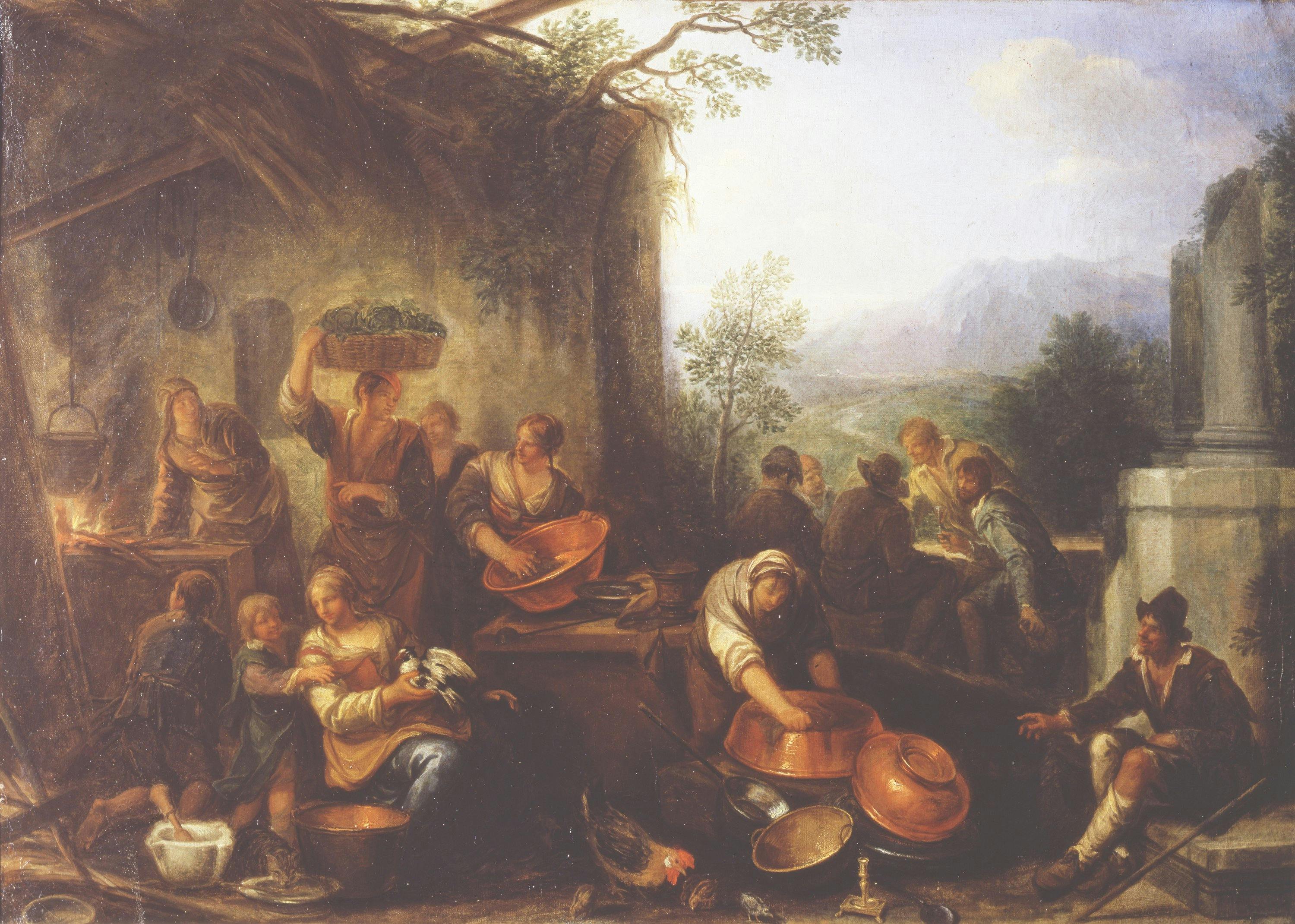Rustic scene
Theodor Helmbreker called Monsù Teodoro (Harlem 1633 - Rome 1696)
The subject of the 'open kitchen' was one of the most popular among the circle of Flemish artists who gathered in Rome in the 1720s and 1730s around Pieter van Laer, known as 'Bamboccio', a nickname from which the term 'Bamboccianti' was derived to indicate the artists of his circle and his later followers active in the second half of the 17th century, such as Theodor Helmbreker.
The scenes of everyday and popular life, often marked by poverty, became highly sought after by collectors, even outside Rome. This is the case of the Medici who, through their emissaries and correspondents, acquired a considerable number of works of a genre that drew inspiration from reality, encroaching on the taste of sketches. Our painting shows a moment in the preparation of a popular dinner to be held outdoors, near the ancient ruins of a Roman colonnade where a sort of cave has been used as an improvised kitchen. In the background a group of men are drinking while sitting at a table, while in the foreground some women are preparing and cleaning the copper basins that will be used to prepare the food. A cauldron is already on the fire, and the boy pointing to the hearth is ready to deliver the vegetables contained in the basket carried on his head. In the foreground children and farmyard animals, as well as the beggar sitting aside, evoke situations that must have been common in 17th-century Rome. Various kitchen utensils appear in the scene: a frying pan, a stone mortar, some tin plates, but the dominant presence is, as usual, that of the branches, omnipresent objects in all the kitchens of the time, whether popular or aristocratic.
In 1705 Francesco Marucelli donated to the Grand Prince Ferdinando de' Medici, son of the Grand Duke Cosimo III, this painting of Helmbreker - or Monsù Teodoro, as he was commonly called in the Italian version of his name - which went to enrich the collection of small-format works gathered in one of the rooms on the first floor of the villa in Poggio a Caiano. From the 18th century the painting passed into the collections of the Palatina in Pitti Palace.
L. Laureati, Theodor Helmbreker, in G. Briganti – L. Trezzani – L. Laureati, “I Bamboccianti. Pittori della vita quotidiana a Roma nel Seicento”, pp. 341 - 348
